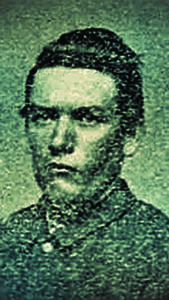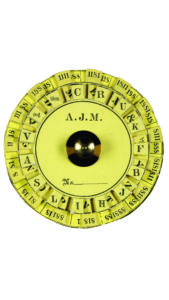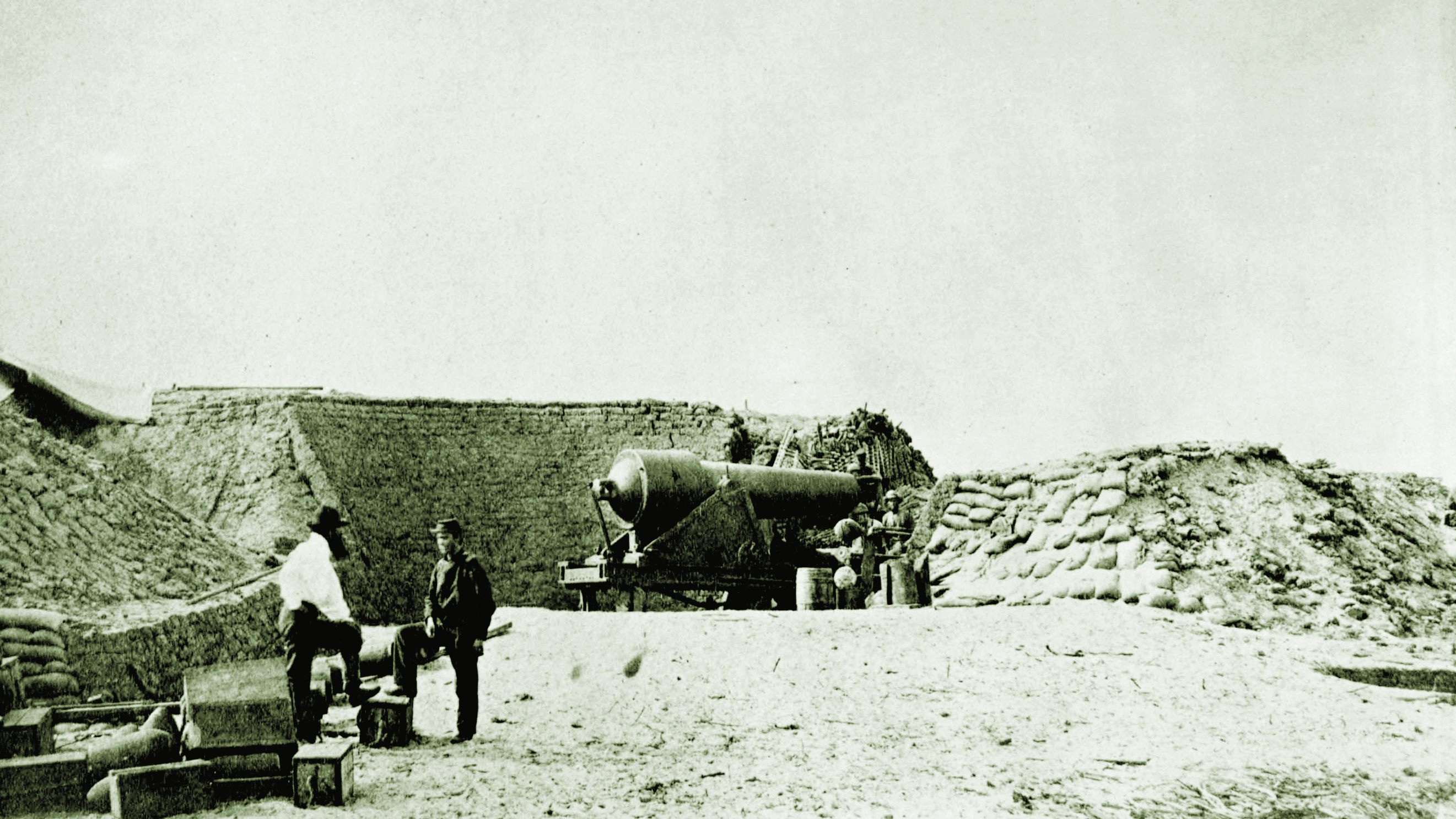A Union code-breaker wrecks Confederate hopes in Charleston Harbor
In February 1864, Union troops overran a Confederate signal station on Johns Island in Charleston Harbor, capturing the enemy’s record of military messages—Union as well as Confederate. That their code system apparently had been compromised by the Rebels months earlier was unsettling news for the Federals. The Union high command immediately instituted a drastic change in its own coding procedures and ordered that any newly captured Confederate codes be deciphered without delay.

Two Union officers traveled to Fort Strong for that purpose, with no success. Then in June 1864, Sergeant John Dorrance Colvin of the U.S. Signal Corps arrived at the fort to try his hand at breaking the codes. Colvin had been trained by the Signal Corps in the discipline of sending and deciphering coded communications. Evidently gifted with an innate ability to do so, he quickly proved the right person for the task.
Born into an Abington Township, Pa., farm family in June 1835, Colvin eventually followed in his father’s footsteps and found work as a farmer in Parsons, Pa., near Wilkes-Barre. At the outset of the war, Colvin, then 25, joined the 47th Pennsylvania Infantry.

The “wig-wag system,” which allowed military personnel to communicate with each other using signal flags, was created before the war by Major Albert J. Myer, a New Yorker. During the war, Myer had been actively recruiting men from both Regular Army and volunteer units to serve in a newly formed Signal Corps. Colvin, who had seen his share of combat, was transferred from infantry duty to the Signal Corps in October 1863 and sent to South Carolina. By this time, he had mastered the wig-wag system and was sending and receiving flag-and-torch messages to and from the various Federal units. He was now proficient at deciphering codes, skills that earned him a sergeant’s stripes.
After learning of the order to break the Southern code system, Colvin asked for a transfer to Fort Strong. He created what were known as cipher discs, each designed to use various letter or number sequences. Through these, he was able to match and decode the patterns in the messages being sent by Confederate signal operators.
“Within a short time [he] succeeded in reading the Confederate common code,” recalled Private George H. Stone of Maine, who would train as a code-breaker under Colvin. “Thereafter his career was brilliant. He was able to gain very important information of the enemy’s movements….Repeatedly the Confederate operators sent messages in cipher and changed the cipher, but all of these he was for several months able to read.”
With about 14 Rebel signal stations visible from the Union position, each sending coded messages back and forth, this was a huge accomplishment—and of great benefit to the occupying Union forces. According to one chronicler, “Only much later, in the early fall, were the Confederates aware of the Federal code-breaking.”
In a June 30 report, Captain Henry R. Clum, the Department of the South’s chief signal officer, wrote:
About the 1st of the month Sergt. John D. Colvin was stationed at Fort Strong, on Morris Island, with the several codes, heretofore used by the rebels, for the purpose of reading the enemy’s signals if possible. If not successful he was to take down the numbers for the purpose of deciphering them. For nearly two weeks nothing could be made out of their signals, but by persevering he finally succeeded in learning their codes….Sergeant Colvin is still at Fort Strong, with instructions to telegraph all messages read by him to General [Alexander] Schimmelfennig, who is commanding in that district. Messages have been read by him from Beach Inlet, Battery Bee, and Fort Johnson. Lieutenant Roberts reports that the sergeant has also succeeded in deciphering all but three or four of the letters of the cipher as used by the enemy.
In his report to Secretary of War Edwin M. Stanton, Lt. Col. William Nicodemus, the U.S. Army’s chief signal officer, wrote, “This man has displayed a remarkable talent and fitness for this branch of the service….He is, therefore, respectfully recommended to favorable notice by the department.”
An elated Maj. Gen. John Foster, commander of the Department of the South, wrote to his superiors in Washington, D.C., “I have to report that the rebel signal code now used by the enemy at Charleston has been deciphered by Sergt. John D. Colvin, of the Signal Corps. For this, which is the result of his constant watchfulness, study, and perseverance for several weeks, night and day, at his station in Fort Strong, I respectfully recommend that he be rewarded by promotion to lieutenant in the Signal Corps, or by a brevet or medal of honor.”
Colvin never received a medal but was promoted to 2nd lieutenant in May 1865. After the war, his code-breaker experience behind him, he returned to Pennsylvania, married, and settled down in Parsons. Over the years, Colvin held managerial positions at various collieries, eventually working as superintendent of the Algonquin Coal Company. Ever civic-minded, he served as the town’s postmaster, belonged to various patriotic orders, and in 1882 joined the Pennsylvania National Guard as a captain of artillery.
Colvin died in March 1901. Ironically, in an extensive obituary referring to him as “one of the most prominent residents of Parsons,” the Wilkes-Barre (Pa.) Times makes scant mention of his wartime experience, stating only, “He served during the entire war from ’61 to ’65, and performed valiant service.”
Although his name is not well known today, Colvin’s extraordinary code-breaking efforts during the war—as well as those of his fellow signal corpsmen—provided the Federal forces with an indispensable tool for deciphering the Rebels’ codes, and as a result, predicting their movements. For the first time in the history of warfare, armies were able not only to predictably send, but to decipher, vital communications in the field.
Ron Soodalter writes from Cold Spring, N.Y. ACW thanks Craig L. Swain for his research help.
This Hidden Heroes column appeared in the July issue of America’s Civil War.





